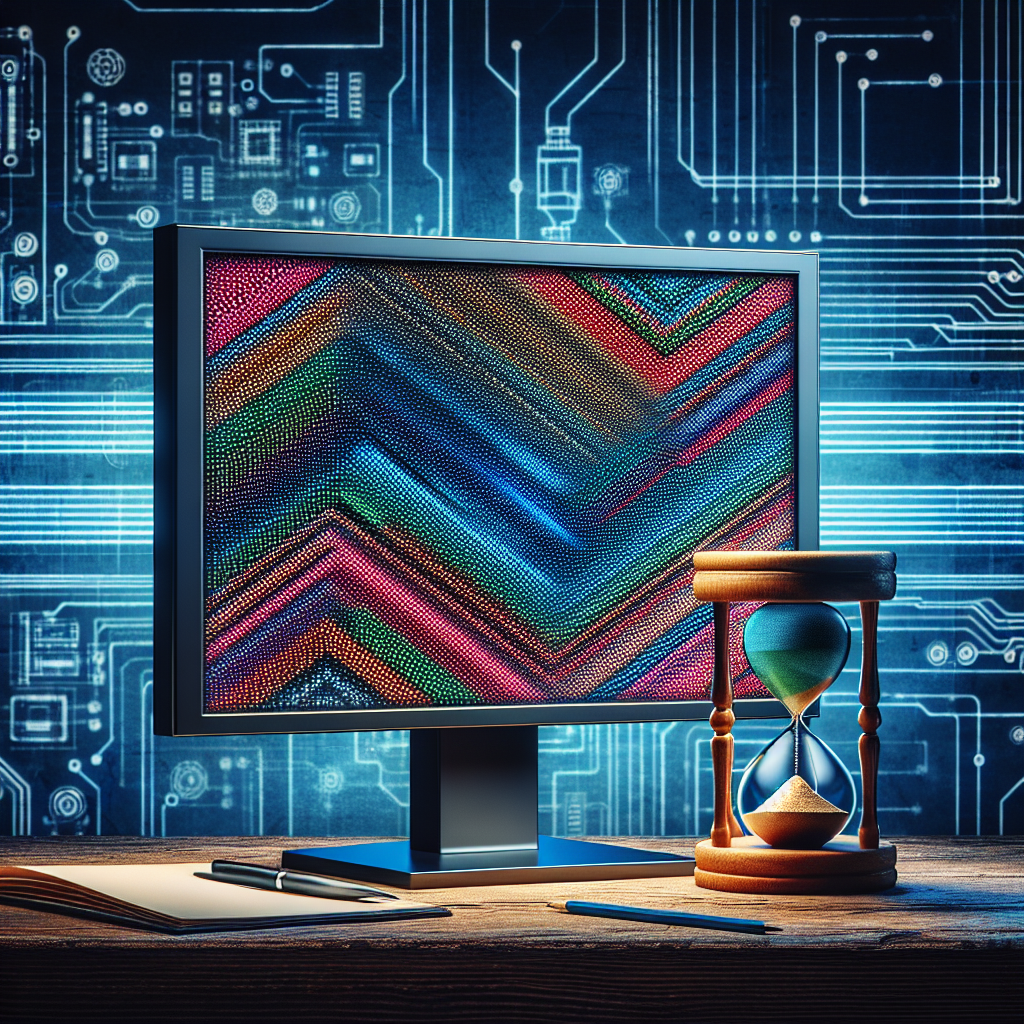Understanding the susceptibility of LCD monitors to screen burn-in is crucial in today’s digital age where monitors are a primary medium of information consumption and media enjoyment. While screen burn-in is a well-known issue associated mostly with older CRT and plasma displays, consumers often question whether modern LCD monitors face the same problem.
Table of Contents
- What is Screen Burn-in?
- Screen Burn-in in LCD Monitors
- Common Causes of Screen Burn-in
- How to Prevent LCD Screen Burn-in
- How to Fix Screen Burn-in
- Conclusion
What is Screen Burn-in?
Screen burn-in, also known as image persistence or ghosting, occurs when a static image is displayed for an extended period, causing a permanent shadow or ghost of that image to be visible even when the display is switched to another image.
Screen Burn-in in LCD Monitors
Unlike their CRT and plasma counterparts, LCD monitors are generally less prone to permanent screen burn-in. However, they can still experience temporary image persistence. This difference primarily stems from how LCD technology works. Here’s a comparison to give more clarity:
| Feature | CRT/ Plasma | LCD |
|---|---|---|
| Susceptibility to Permanent Burn-in | High | Low |
| Susceptibility to Temporary Image Persistence | Moderate | Moderate |
| Technology | Phosphor-based | Liquid Crystal Display |
The structural differences between these technologies result in variable behavior regarding image persistence and burn-in, with LCDs being more resilient to permanent damage.
Common Causes of Screen Burn-in
Screen burn-in or image persistence on LCD monitors can be attributed to several factors:
- Static Images: Prolonged display of static images such as logos, toolbars, or widgets.
- High Brightness and Contrast Settings: Consistently high brightness and contrast settings can hasten the process.
- Temperature: Excess heat can accelerate wear on an LCD panel, potentially heightening susceptibility to image persistence.
How to Prevent LCD Screen Burn-in
Proactive measures can significantly reduce the risk of screen burn-in on LCD monitors. Here are some valuable tips:
Use Screen Savers and Power Management
Enable screen savers and power management settings to turn off the monitor after a certain period of inactivity. These measures can prevent static images from being displayed for long durations.
Reduce Brightness and Contrast
Lowering the brightness and contrast settings can reduce the overall stress on the LCD panel, thereby mitigating the risk of image persistence.
Regularly Change Display Content
Frequently changing your screen’s content minimizes the risk by ensuring no single image remains static for long. This includes rotating wallpapers or moving floating widgets.
Use Pixel-Shift Technology
Some advanced monitors come with pixel-shift technology, which slightly shifts the image on the screen to avoid prolonged static display on the exact same pixels.
How to Fix Screen Burn-in
If your LCD monitor shows signs of image persistence, here are some possible solutions:
Run a Pixel Refresh Utility
Many modern monitors include a built-in pixel refresh utility that helps to reset the pixels to their default state. Running this utility can often remove mild cases of image persistence.
Use a Screen Burn-in Repair Video
There are specific videos designed to refresh and exercise all the pixels on your screen. Such videos often display rapidly changing colors and patterns.
Turn Off the Monitor
A prolonged period of inactivity (turning off the monitor) can gradually restore pixels to their original state. However, this method is generally more effective for milder cases of image persistence.
Adjust Brightness/Contrast Temporarily
Temporarily adjusting the brightness and contrast settings can sometimes help in reducing the visibility of persistent images.
Conclusion
LCD monitors, while much more resistant to permanent screen burn-in compared to older technologies like CRT and plasma, are not completely immune to image persistence. However, with the right preventive measures and timely intervention, the risk can be minimized, ensuring a prolonged and high-quality visual experience. Understanding the underlying causes and solutions not only helps in maintaining the longevity of your monitor but also enhances your overall user experience.

